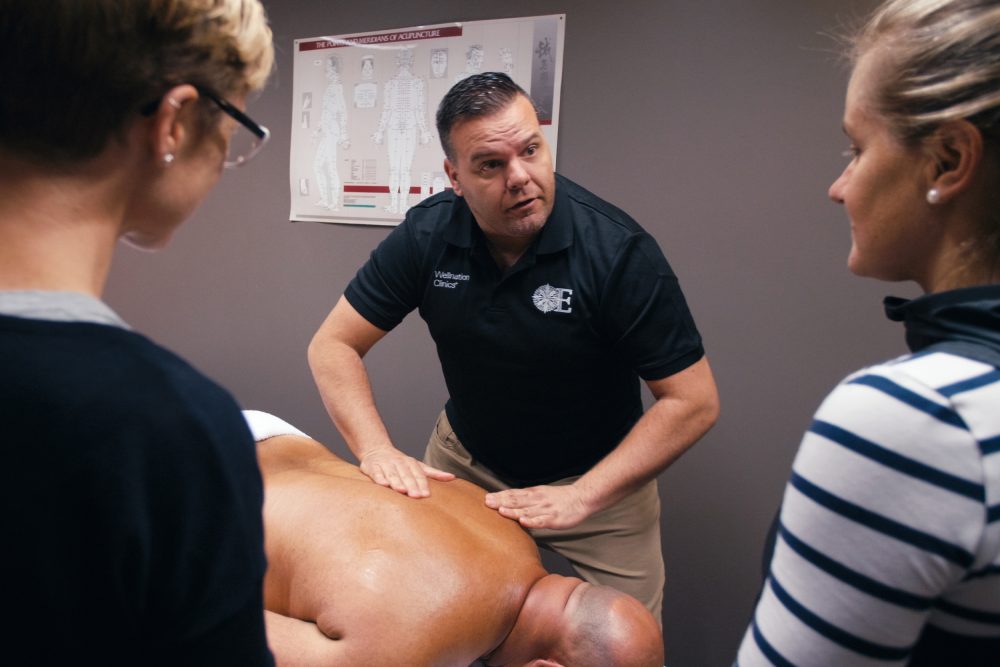By Anthony Turri, a qualified Remedial Massage therapist, Exercise Physiologist, Sports Coach, Personal Trainer and National Program Manager of Remedial Massage at Endeavour College of Natural Health
With the introduction of technology at preschool and kindergarten, a remedial massage expert says kids as young as five are presenting with posture problems, potentially leading to a lifetime of health issues.
Endeavour College’s Remedial Massage National Program Manager Anthony Turri said while there were many benefits to kids having access to technology, staring at an iPad in the wrong way for a lengthy period of time can have long-lasting health ramifications such as reversible postural adaptation, otherwise known as a hunched back due to the excessive curvature of the upper back.
“I’m increasingly seeing kids coming to me with neck and back pain and what they don’t realise is that technology is crunching their posture. We’re all told to stand up straight from a young age but standing straight isn’t just about looking good, it’s about your body functioning well. Poor posture might present in the neck and back but it’s actually affecting the diaphragm which is where our breath comes from. Breathing is key to energy, sleep, and overall health. It doesn’t just affect physical performance, it can cause fatigue. The worry is that kids are starting to have these problems from the age of five or six and by the time they hit puberty, their bad habits have been entrenched for a decade,” Anthony said.
“The good news is that ‘tech neck’ and poor posture is preventable and can be corrected with remedial massage and strengthening exercises. Our infatuation with technology doesn’t have to lead to a generation of hunchbacks.”
As well as seeing a spike in children presenting with posture problems, Anthony said it was also one of the biggest complaints he was getting from his adult patients so he has added a module on ‘tech neck’ to his new Remedial Massage course to train up the next generation of practitioners with the ability to treat tech problems.
It’s one of the reasons that massage is a growing industry. According to Seek, there will be a 20 per cent growth in massage jobs in the next couple of years with an expected 15 thousand massage therapists in Australia by 2020.
Anthony said one of the major reasons for the increase was growing demand for treatment for Australians of all ages who are affected by technology and the fast pace of modern life.
“We’re all working longer hours in more sedentary jobs and using technology more than ever. This way of life is not conducive to good physical health and as more Australians become more in tune with their body and take preventative steps to look after their bodies, remedial massage is only going to become more in demand,” Anthony said.
Here are Anthony’s top tips to treat ‘tech neck’:
Understand good posture.
Look at images of good sitting, sleeping, standing and working postures. Ask someone to take a photo of you in those positions, ideally when you’re not expecting it. Compare your posture to ideal posture and make corrections as needed.
Make posture a priority.
Most people don’t focus enough on their posture. Ask friends and family to remind you to move at regular intervals and try setting time alerts every half hour on devices to force children to take a break and remind adults to check their posture.
Make time to move.
If you spend most of your day sitting for work, study or play, it’s important to take regular breaks. The human body is designed to move, not hold prolonged static positions.
Seek professional help.
If you’re already feeling the effects of ‘tech neck’ ie neck strain, shoulder tightness, postural fatigue, head hanging forward and upper back pain, it might be time for a remedial massage. Regular massage is the first step towards treating ‘tech neck’.
Ergonomics are key.
Make sure workstations and anywhere kids study or do homework are set up ergonomically and correctly. Your screen needs to be at eye level. A head rest can also help with neck support.
Limit screen time.
Where possible, cut down social media usage to minutes, rather than hours per day. It’s possible to be social without media. Instead of playing games on apps, play games with people. We all need to do more physical activity.
Change sleeping habits.
If you sleep on your side, tuck your chin in and if you sleep on your back, reduce the size and numbers of your pillows.
For more information visit endeavour.edu.au
You may also like to read:









